Without question, climate change has had significant implications for the living environment, particularly the ocean. As global warming raises sea temperatures, the effects have altered aquatic life, especially in microbial communities. Now, many experts are questioning what mechanisms determine microbes’ resilience or vulnerability, and the long-term impacts of these changes on aquatic ecosystems and biodiversity.
Climate change and microbial communities
Microorganisms like bacteria, viruses, fungi, and protozoa are essential in supporting ecological balance. They are also a vital food source within some aquatic habitats, including seagrass beds, mangroves, and coral reefs. However, harmful microbial communities may negatively impact aquatic ecosystem processes.
Fluctuations in microbial communities indicate the ocean’s health as the organisms react to changing temperatures, light, nutrients, and other environmental factors. With the sea absorbing 90% of the total heat uptake, the shifts can have dire consequences for microbial diversity, ecosystem structure, function, and resilience.
Increasing temperatures selectively favor some adapted microbial species over others. The stress of altered weather patterns and nutrient runoff in aquatic bodies further disrupts microbial functionalities and puts marine and freshwater life at risk. The world has already watched these effects play out in several aquatic habitats.
Case study: coral bleaching
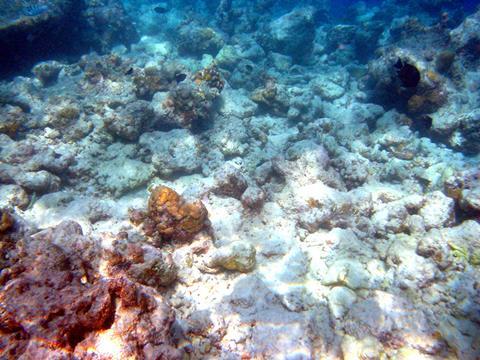
A recent study has uncovered the role of microbes in coral reef susceptibility to bleaching events. Corals turn white and eventually die under ecological stress, a factor greatly attributed to ocean warming. In the study, researchers determined specific microbial species may influence how corals endure bleaching.
Coral reefs with the microbes Chaetomiaceae and Schizophyllum present had a higher chance of survival than those without. These particular microorganisms seemingly provided enough nutrients and protective properties to help them cope as ocean temperatures rose to record highs. Conversely, Vibrio, Acidobacteria, and Flavobacteriales microbes put reefs at risk of die-off.
Understanding which microbial communities benefit the health and resilience of reefs against bleaching is crucial in developing conservation strategies.
READ MORE: The Critical Role of Microbiome Stewardship in Mitigating Ocean Degradation and Climate Change
Case study: arctic ice melts

Arctic marine habitats lock away microorganisms and other biota in ice shelves, glaciers, and iced-over lakes. As 42% of ice shelves have melted over 30 years, the release of microbes has significantly disrupted the polar ecosystem. For instance, while the outcomes of their interactions with the downstream aquatic and terrestrial habitats remain uncertain, preliminary findings suggest they may further exploit the cryosphere.
Another study warns of future epidemics and pandemics. Arctic microorganisms remain in permafrost and glaciers for centuries. The reactivation of pathogens from the glacial microbiome — which were meant to be extinct — could pose dire consequences for the environment and society.
Case study: freshwater algal blooms
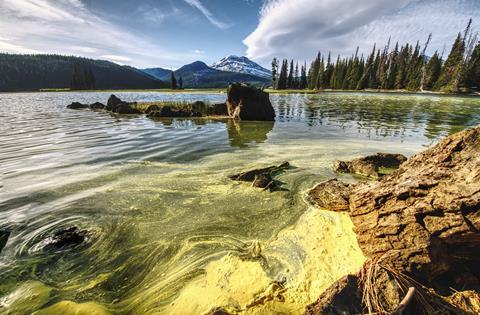
Harmful algal blooms (HABs) — made up of cyanobacteria and phytoplankton — have increased in intensity and frequency in recent years, most notably throughout the Gulf of Mexico and inland freshwater streams. Although not all blooms are harmful, others block light and deplete oxygen to lethal concentrations for aquatic species. These occurrences — also known as red or brown tides — can impact human health and terrestrial species by decreasing water quality.
Agricultural runoff has proven to be a leading cause of HABs, particularly as the use of phosphorus and nitrogen fertilizers was widely deployed in large-scale farming after World War II. As precipitation patterns worsen with climate change, the runoff streams from farms to fragile water bodies, causing eutrophication in aquatic habitats.
Overall, nonpoint pollution sources are challenging to mitigate, making freshwater HABs more prevalent in changing climate conditions. Water temperatures and atmospheric changes also enable algal growth, with cyanobacteria preferring warmer waters.
Critical methodologies for understanding microbial response
Scientists have the difficult but critical task of studying how climate change affects aquatic microbial communities. To gain insights effectively, they focus on the following methodologies:
- Metagenomics: Extracts DNA samples to examine microbial genetic diversity and functionality, allowing researchers to notice changes in microbial species and metabolic processes with environmental stressors.
- Stable isotope probing: Identifies which microbes are active in different metabolic processes — such as nutrient cycling and other functions — by studying stable isotopes.
- Metatranscriptomics: Studies the microbial RNA transcripts to understand their metabolic attributes and ecological functionalities amid the changing environment.
- Ecological network analysis: Analyzes relationships and dependencies between microbial communities and climate change stressors, indicating ecosystem resilience.
- Lab-controlled manipulations: Simulates how certain climate change conditions impact microbes and trigger a response to communities.
- Long-term monitoring: Identification of patterns and trends in microbial responses to ecological changes, focusing on genetic diversity, composition, and processes.
Aquatic microbial communities are highly complex, meaning experts must rely on more than one methodology to understand how climate change reshapes them. For example, while network analysis delivers critical insights, current strategies only tell part of the story. Analyses should instead consider algorithmic complexity and design the most suitable analytical approach for interpreting data.
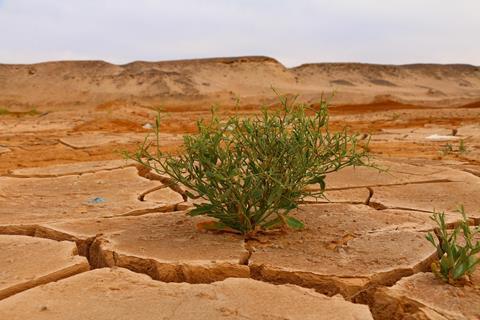
Broader consequences of microbial changes
Microorganisms are small but mighty, and climate change impacts could pose dire implications for the environment at large. For one thing, microbes are essential to carbon, nitrogen, and phosphorus cycling, aiding the production and consumption of greenhouse gasses and other pollutants.
An imbalance of microbial communities may negatively impact animal, plant, and human health. Temperature and precipitation changes, in particular, modify the microbial communities needed for waste decomposition. One example is rainwater runoff and stagnant water in urban areas, which increase vector-borne pathogens and mold. During a flood, microbial genes interact in unpredictable ways, making it difficult for positive microbial activities to commence in wastewater treatment.
Without healthy microbial communities consuming waste, contaminated runoff leads to more frequent HABs. Past blooms have disrupted fisheries, aquaculture, tourism, and the health of aquatic wildlife. In 2018, HABs affected $5.6 billion worth of commercial fish and shellfish and $1.5 billion in aquaculture production in 2017. Meanwhile, a domoic acid bloom hit the West Coast in 2015, causing a $48.3 million economic loss due to a late Dungeness crab season.
Toxic microbial algal blooms also impact endangered aquatic species. In fact, 50% of unusual marine mortalities occur because of HAB events. This is seen often in sea lion populations in southern California, where researchers have determined their deaths are associated with domoic acid.
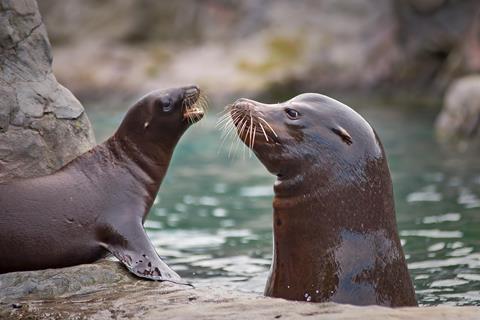
Conservation strategies for mitigating microbial communities
Past research, advancing technologies, and key methodologies have paved the way for well-informed conservation strategies to address climate change’s impacts on aquatic life. As science evolves around microbial communities, so will the following initiatives.
1. Ecological restoration
The more scientists understand how climate change affects microbial communities, the better they can home in on restoration. This requires identifying what microbial taxa and processes enable ecosystem balance.
A targeted intervention may focus on repairing essential functions of microorganisms to boost ecological resilience. To do this, experts have turned to marine probiotics to stimulate aquatic microbiomes. Although this is a new conservation strategy in aquaculture, research is rapidly advancing. It is essential to view this approach as rehabilitative instead of manipulative, meaning the goal should be to restore altered and disrupted microbial communities, not control them.
2. Monitoring assessments
Because microbes offer vital insights into ocean and freshwater health, researchers must identify essential microbial indicators in their efforts to survey and assess ecosystems. This conservation method will allow experts to detect environmental stressors and deliver solutions before they irreversibly implicate aquatic life.
3. Microbial bioremediation
Microbial bioremediation leans into microbes’ innate abilities to break down, detoxify, and eliminate environmental pollutants from aquatic ecosystems. These processes include oxidation and enzymatic reduction reactions, which are essential for microbial metabolic functions. Bioremediation entails introducing or simulating microorganisms in degraded aquatic environments due to oil spills, runoff, or other sources of contamination.
The bioremediation intervention is deemed sustainable because it utilizes natural biological dynamics to remedy and improve water quality. It is also cost-effective and conducive to cleaning up other ecosystems.

4. Climate resilience strategies
Communities and industries are learning to adapt to climate change. In the process, they have designed resilience strategies to enhance ecosystem sustainability and decrease impact vulnerabilities from extreme weather, warmer temperatures, and shifting precipitation patterns.
The scientific community can take a similar approach to building resilience for microscopic organisms. Strategies may include helping them acclimate to changes by boosting microbial diversity, restoring aquatic ecosystem functions, and limiting ecological stressors. This also entails more stringent measures for mitigating runoff pollution and promoting environmentally friendly land use — for instance, through sustainable, organic agriculture.
5. Evidence-based policy developments
Scientific evidence gained from studying climate change’s effects on aquatic life will play an essential role in developing future conservation policies. Such legislation should protect vulnerable aquatic and marine habitats while considering microbial processes to create more stable ecosystems.
6. Community engagement
Educating the public and promoting engagement at a local level is essential in cultivating healthier aquatic microbial communities. When citizens actively participate in stewardship, their conservation efforts help better preserve microbes’ genetic diversity. These strategies may include advocating for marine protection and cleaning debris from coastal and freshwater areas.
Resilient aquatic life will withstand future climate change impacts
Aquatic life and its complex processes can help build resilience against looming climate change threats by safeguarding microbial communities in marine environments. Research should concentrate on creating more diverse microorganisms in oceans and freshwater by better understanding microbial metabolic functions and responses to warming conditions and pollution.

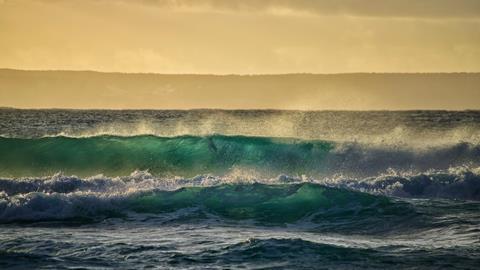






No comments yet